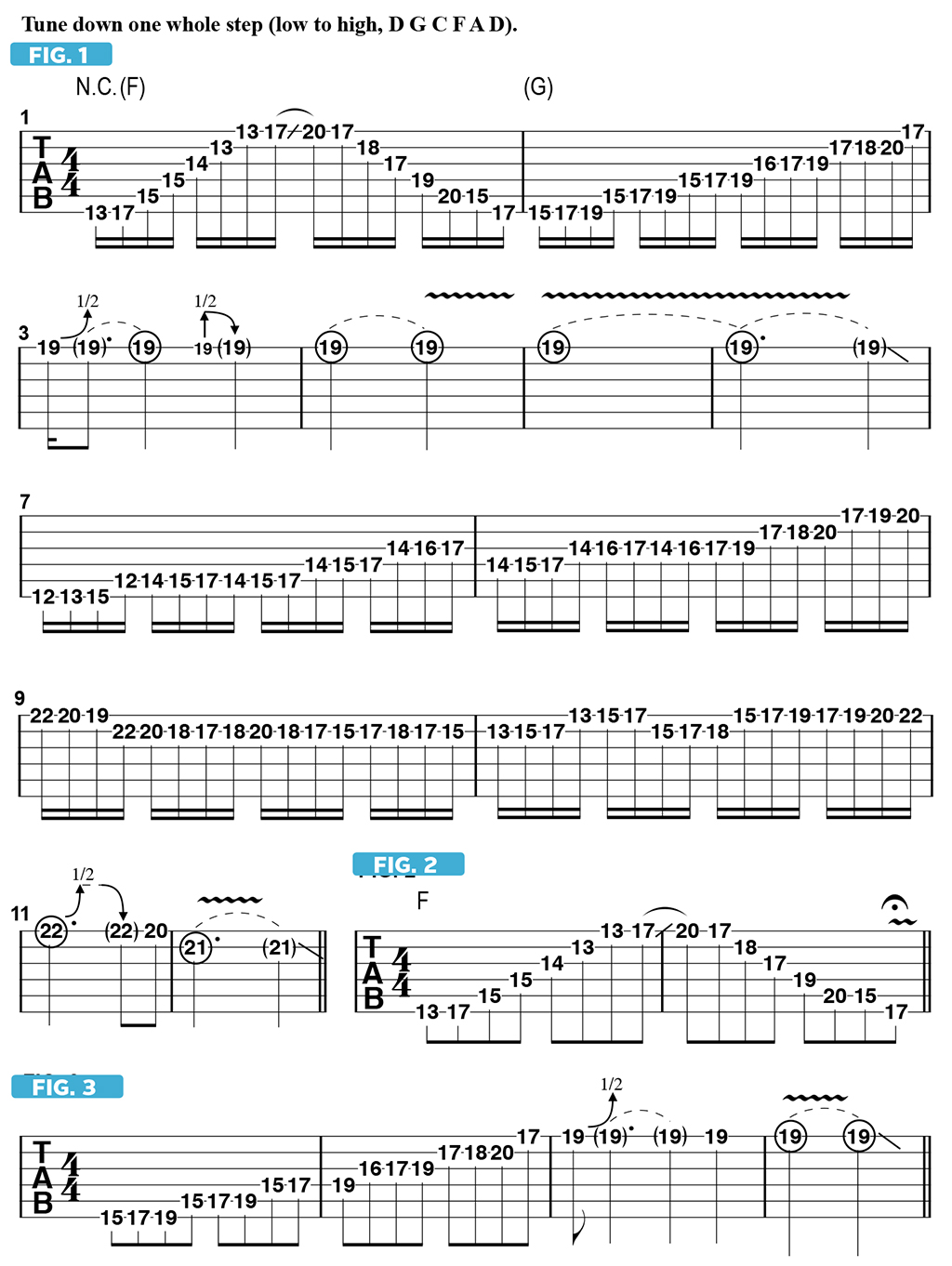Devise solo lines from long alternate- and economy-picked sequences
Learn how to navigate tricky picking passages in this lesson from Jason Richardson
Whenever I am composing a complex melodic line for a song, I have to determine what pick- and fret-hand techniques will enable me to perform the part most efficiently. In many cases, the result is a combination of alternate (down-up) picking and economy picking. For those unfamiliar with the term, economy picking is a technique wherein the same pick direction is used when crossing from one string to the next. For example, when moving from a lower to a higher string, a downstroke is used for the last note on the lower string as well as the first note on the higher string. When moving from a higher to a lower string, an upstroke is used for both the last note on the higher string and the first note on the lower string. Guitarists who play in the “gypsy jazz” style often employ this useful technique, which is also commonly referred to as “rest-stroke picking.”
The example for this column comes from a solo I play in my song “Omni,” as featured on my album I. The beginning of the solo is based on standard 1-3-5 (root, major third, fifth) arpeggio patterns in F major that ascend and descend in different forms, played lightning fast, followed by scalar runs based on the G Mixolydian mode (G A B C D E F). While working out this solo, I discovered that I was having trouble using alternate picking for the three-notes-per-string ascending patterns, so, ergonomically speaking, economy picking works best for this part of the solo, as it allows me to pick down-up-down on each string.
FIGURE 1 shows the solo, played at half speed, which incorporates all of the elements described above. This initial phrase ends with a sustained high B note. When I move into the next part of the solo, starting in bar 6, I return to alternate picking, as the anatomy of the line is not conducive to economy picking at this point.
Now that you have a clear idea of the different elements in this solo, imagine it played twice as fast, which is how I perform it live and on the record. Very challenging, but the only way to get it up to or even near the original tempo is by working through each section deliberately and with attention to every technical detail.

In order to help you focus on the opening phrases, FIGURES 2 and 3 illustrate the initial arpeggio and the G Mixolydian run, respectively. In FIGURE 2, notice that I use sweep picking for both the ascending and descending arpeggio forms. Moving into the ascending G Mixolydian patterns in FIGURE 3, I then switch to down-up-down for the three-note pattern on each string, which results in economy picking as I move to each higher adjacent string.
This is the final installment of Full Shred for now, so I hope you have enjoyed these columns and the materials have helped you to hone your guitar playing skills. See you out on the road!
All the latest guitar news, interviews, lessons, reviews, deals and more, direct to your inbox!
